Activities under CAMPA are mainly divided into three broad categories: A. Compensatory Afforestation (CA) Activities, B. Net Present Value (NPV) Activities, and C. Under Interest Accrued Activities.
CA, PCA, CATP, SZ etc.
The mandate of forest (conservation) Act, 1980 is to conserve and protect the forest resources against the diversion of forest land made for non-forest purposes. The various activities are done in lieu of forest land diverted for non-forest uses. The central Govt. during approval of diversion imposes certain stipulations to carry out the compensatory afforestation against the diverted land.
INTEGRATED WILD LIFE MANAGEMENT PLAN
Wild life organization is responsible for protection and conservation of wildlife and biodiversity within and outside of the protected areas in the state. The user agencies are required to contribute funds for the implementation of wild life management plan under the forest conservation Act, 1980 to mitigate the hardship of wild life owing to diversion of forest land and degradation of environment. The broad components of wild life management plan are mainly.
- Regional wild life management plan.
- Site Specific wild life conservation plan.
Accordingly, the CAMPA APO has dedicated provisions for wild life management plan. Different activities like Deployment of wild animal tracker, Anti Depredation squad have been provided in the APOs for smooth management of wild life. In addition, provision has also been made for protection and management of wildlife habitat beyond protected areas. Due to input of the wild life protection activities a noticeable impetus has been noticed during the APO Plan period.
1-Regional Wild Life Management Plan
A landscape approach for conservation of wild life in the peripheral areas with full co-operation of in-habitant is the objective of the Regional wild life management plan
2-Site Specific wild life conservation plan.
During Forest Project clearance certain conditions are mandatory for conservation of Flora & Fauna in the project area within a limit of 10 Km area affected by the establishment of the Project. The site-specific wild life conservation plan aims to minimize the threat posed by the project, to improve wild life habitat, to facilitate movement of wild life and to reduce the human- wild animal interface.
Net Present Value (NPV)
AFFORESTATION ACTIVITIES
The core activities of the APO 2019-20 are mainly conservation, Plantation, SMC, regeneration and management of forest in addition to silvicultural operation. Odisha being the state which is prominently in the trend of increasing the forest cover due to continuance of plantation activities. Hence major thrust has been given to rejuvenate the green cover by giving emphasis on plantation activities. Different models of plantation activities were taken up in this plan period. In addition to the first-year plantation maintenance activities for previous year plantations are also taken care of, to stabilize the growth of the old plantation.
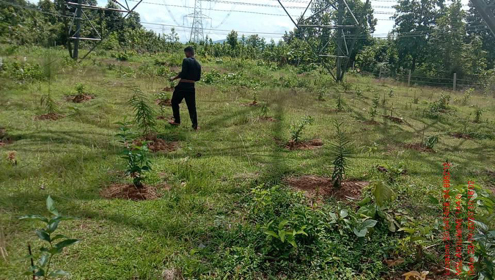
AR PLANTATION ECONOMIC @ 1600PLANTS/ HA.
The condition of growing stocks in the forests is being consistently improving through CAMPA by raising block plantation with economically indigenous species in suitable pocket of prescribed plantation working circle areas. In this model of AR plantation, species having high economic value, endangered, and high genetic bio diversity values are proposed except Teak. Most of species are indigenous by nature and suitable to erring site condition.
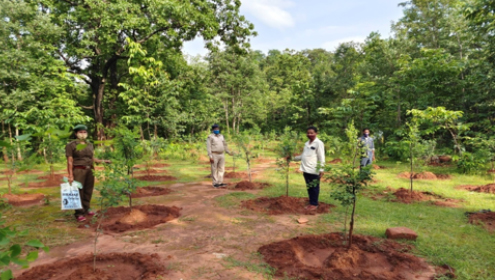
AR INDIGENOUS SPECIES PLANTATION 1600 PLANTS/HA
Due to various biotic, anthropogenic and unsystematic management of forest Some indigenous species are in endangered condition. Now it has become essential to conserve the indigenous species to safeguard the biodiversity. Considering the availability of gaps in the forest floor, site condition conducive to indigenous species, AR plantation model @1600 plants per Ha has been proposed.
AR INDIGENOUS SPECIES PLANTATION 1600 PLANTS/HA
Considering the site condition and gaps available inside forest, the mode of indigenous plantation with 1000 Plants per Hectare are identified and accordingly proposed for plantation.
PHASI PLANTATION @ 1600/ HA
(Car Festival or Chariot Festival') is a Hindu festival associated with Lord Jagannath held at Shri Khetra Puri Dham in the state of Odisha, RATHA YATRA, the Festival of Chariots performed at Puri every year: The three chariots of Lord Jagannath, Balabhadra and Subhadra are newly constructed every year with wood of specified trees like phasi, dhaura, etc. The Phasi trees are getting depleted day by day due to various anthropogenic and biotic factors for which the bare need of specified timber are not sufficiently available from forests of Odisha. It has been planned to raise special plantation programme under CAMPA to carter the requirement of specified phasi timber for Car festival.

ANR PLANTATION
ANR plantation was resorted where there were gaps and intervention of Silvicultural operation was required to restore the density of Forest by raising indigenous Forest Species suitable to the localities and to cater the bare need of the local fringe villages
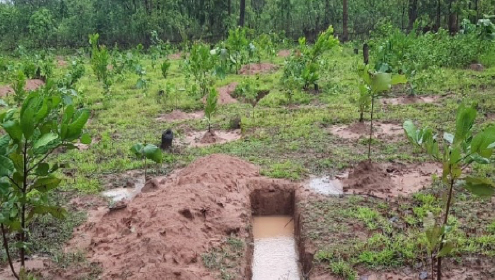
BAMBOO PLANTATION AND MAINTENANCE
Bamboo is one of the fastest-growing plants on the planet. It is highly versatile and rapidly renewable. Long used as a timber alternative for furniture, charcoal, crafts, and food (in the form of bamboo shoots), new technologies are extending bamboo’s value in flooring and construction, for pulp and paper, viscose and rayon fabrics, and even in the construction of wind turbines.
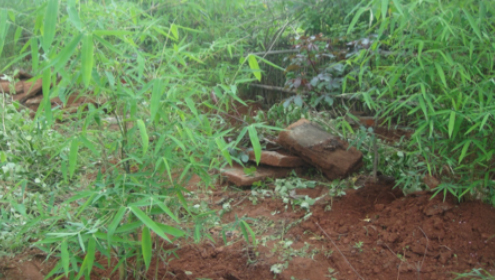
BALD HILL MAINTENANCE
The name Bald hill itself denotes the vegetative growth of the forest. Various anthropogenic factors and acute biotic interference have caused the loss of vegetation and soil erosion of the site. The loss of soil depth resulted devoid of root stocks in the locality. The CAMPA has taken successful steps to embark on massive bald hill plantations by adopting special techniques like foreign soil infusion, intensive soil and moisture conservation and three tier fencing along boundaries as protective measures. Due to effective steps in various Divisions, the naked bald hills have restored greenery within very short period due to successful plantation programmes.
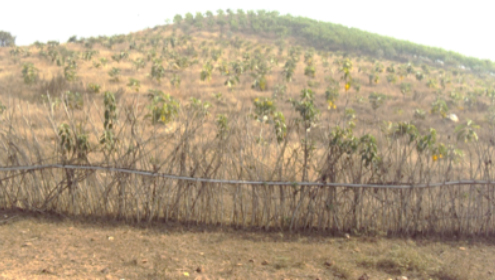
PRE-PLANTING OPERATIONS
These include all forms of operations or activities, carried out on the field before planting can effectively take place. They include a selection of site, bush clearing, burning of trash, mound making, mulching, and nursery preparation, pricking out, thinning and hardening.

AVENUE PLANTATION
It means a row of trees planted along roads and paths. Avenue plantation is one of the important practices of growing trees along roadside and the canal side to increase aesthetic value and to provide shade to the stray animals and travellers.
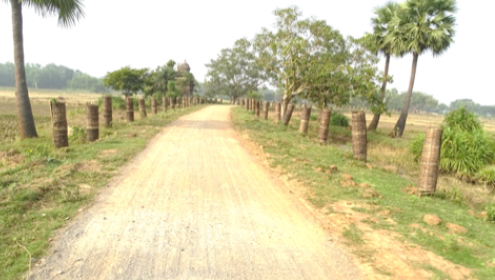
FODDER AND FRUITS PLANTATION
Foods from wild or farmland trees/shrubs in dry lands constitute an important component of food supply in the form of fruits, seeds and other edible parts which are essential for food security. Indigenous trees/shrubs are good source of fodder as grasses dry out quickly due to short rainy season. The domestication of important indigenous trees/shrubs (fruits and fodder species) and their integration in agroforestry practices have been one of the most important forms of biodiversity conservation. The selection, retention or deliberate planting and management of trees by farmers can be considered as the beginning of the domestication process of the species. The species diversity (richness and evenness) was estimated using different biodiversity indices. The results showed that forest sites have highest fruit and fodder tree/shrub species diversity as compared to other land uses which suggest that domestication process of fruit and fodder trees has been slow with focus on only few trees.
Under Interest Accrued
INFRASTRUCTURE DEVELOPMENT:
Forest and Forestry have undergone a drastic change over the last few decades. However, the infrastructure of the Forest Department has not developed keeping in pace with the changing scenario mainly because of inadequate budgetary provisions. This aspect has been well perceived and adequately addressed in the CAMPA rules. The rules lay emphasis on development of infrastructure for the frontline staff. It is thus imperative that infrastructure associated with management of forest official, residential accommodation for the frontline staff, communication, mobility etc. be the priority area in the planning process for augmentation of infrastructure at the cutting-edge level.
SOIL & MOISTURE ACTIVITIES
The Soil & Moisture Conservation is one of the important activities in the degraded forest area which are primarily to be treated under the Forest, Environment & climate Change Department to fulfil the broad objective of conserving fertile top soil, enhancing soil moisture regime and diverting and conserving surface run off for reducing soil erosion. The basic principle of SMC (Soil & Moisture Conservation) is to use and treat the land accordingly to economically sustain available water resources. In order to achieve the objective and implementation of the Soil & Moisture Conservation efficiently, a well-planned strategy is indispensable.
The main objective of soil moisture conservation is to minimize the amount of water lost from the soils through evaporation (water loss directly from the soils) and through transpiration (water loss occurring through the plants! or combined the evapo-transpiration. It is also known that water brings down loose soil particles from higher slopes to lower slopes resulting in rill erosion, sheet erosion and gully erosion. Thus, it is necessary to retard the few of water (run-off), ensure percolation into lower soil layers and in the process to recharge ground water.


